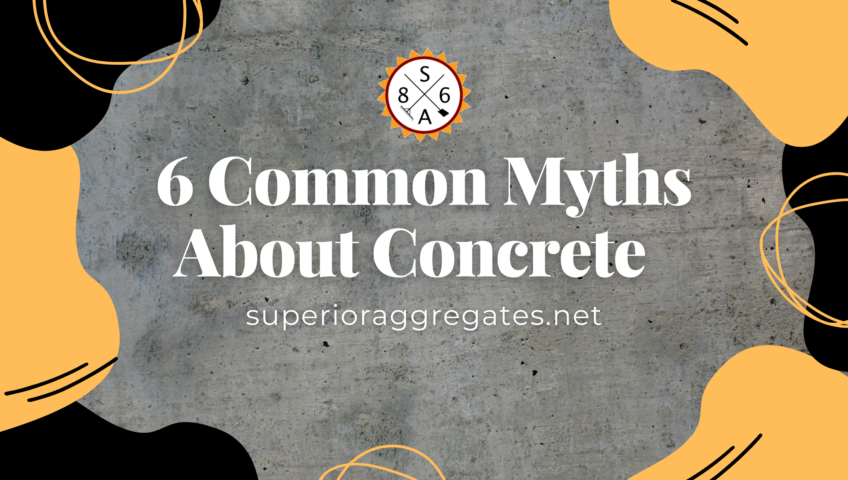
6 Common Myths About Concrete
Concrete is that all-important material so critical to large-scale industrial, commercial, and residential construction projects. In fact, aside from water, no other material is used more than concrete. Its wide range of uses means it’s the preferred material for concrete companies when erecting standing structures like bridges and buildings.
However, despite how much it’s used, there are some common misconceptions about this universally-adopted material. To clear the air, here are 6 common myths about concrete debunked.
1. Concrete is always a gray color.
While concrete initially has a gray color, it doesn’t necessarily mean that gray will be the final color. There are multiple additives and mineral colors that can be blended into the concrete mixture long before it’s dried. These additives can change the color of the concrete once hardened. This is ideal for residential and commercial projects where maintaining an aesthetic is critical.
2. You can use acid to strip a concrete sealant.
This is perhaps the most common misconception and it’s a dangerous one. Acid should never be used to strip concrete sealant, no matter what the reason. Acid’s corrosive properties can seriously damage the concrete’s integrity and allow water to permeate throughout the concrete. The best solution is to avoid acid altogether and use a solvent or sealant remover.
3. Concrete and cement are the same thing.
No, concrete and cement are not the same. Cement is an ingredient in concrete. Cement is mixed with water, sand, gravel, and other aggregates and additives when making concrete. There are very few applications where cement is used on its own. Cement is a dry powder that acts as a binder for all the additives, water, and aggregates in order to make concrete harden.
4. The higher the compressive strength, the more durable the concrete.
Strength and durability are not the same. Concrete’s compressive strength can vary from a low of 2,500 psi to a high of 10,000 psi. However, strength refers to how much load/weight the concrete can withstand. Durability refers to how long the concrete can maintain that load/weight without degradation (breaking down).
Several conditions can affect the concrete’s durability such as freeze-thaw cycles, corrosion, cracking, and sulfate or chemical reactions. The best way to maintain concrete’s durability is by using a top-notch sealant that helps to keep water and other substances from seeping inside and degrading the concrete.
5. Concrete is impermeable.
Actually, concrete is not impermeable. Concrete is actually porous, which means water, fumes and noxious liquids can pass through the top layer of the concrete relatively easily. This can take anywhere from a day, to a month, or even several years. This is why using a high-quality sealant is so important to protect the concrete from the outside elements.
6. You can lay concrete any time of year.
Unfortunately, you simply cannot lay concrete any time of the year or under all conditions. Extreme weather conditions affect how concrete hardens. Below freezing or excessively hot temperatures will prevent the concrete mixture from properly drying.
Concrete installation shouldn’t be done in the extremely cold winter months or the high heat of summer. Instead, spring and fall are the best seasons for mixing and hardening concrete.
Interested in a proactive, customer-centric partner for your next construction project? If so, contact us now.
